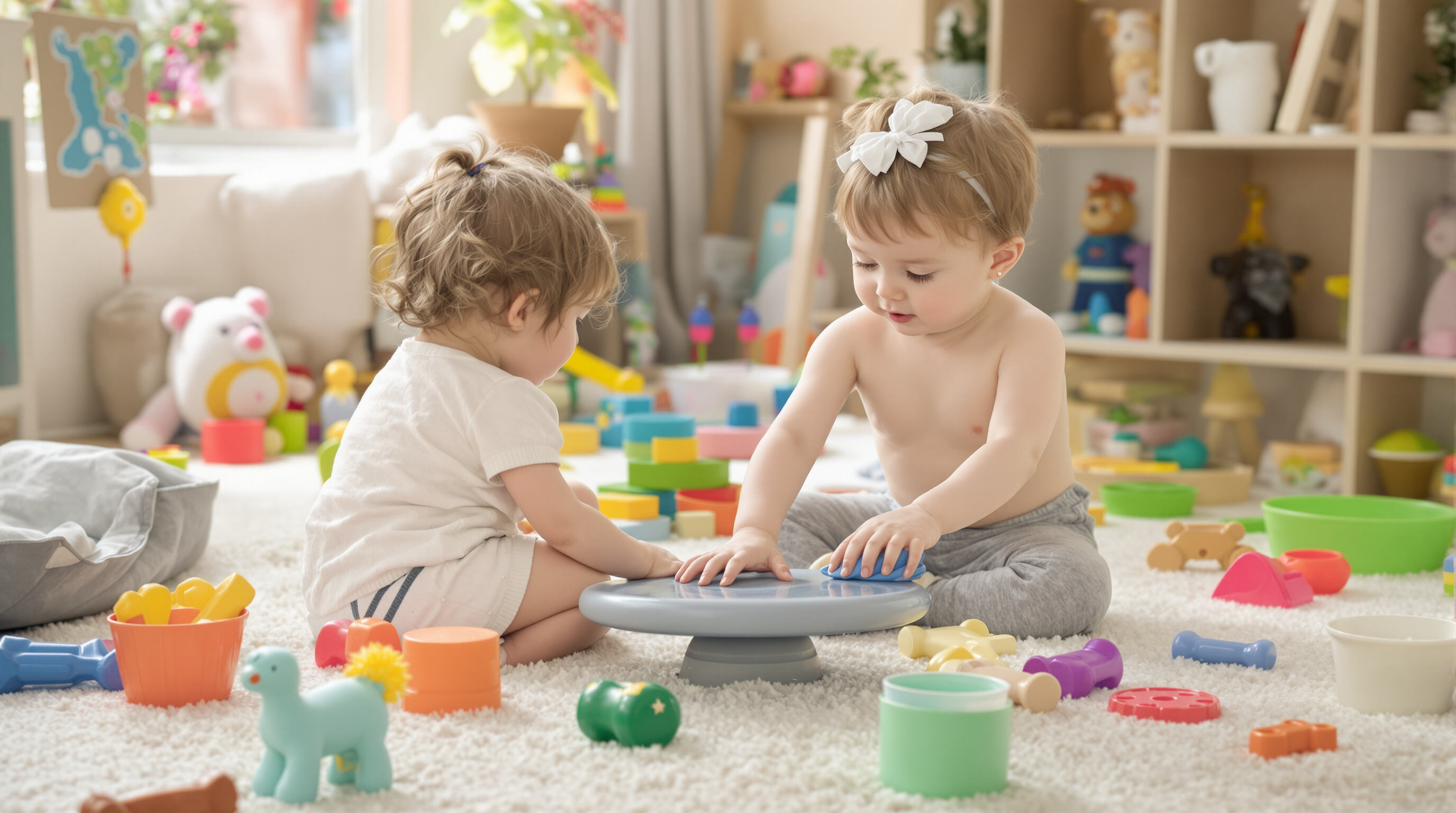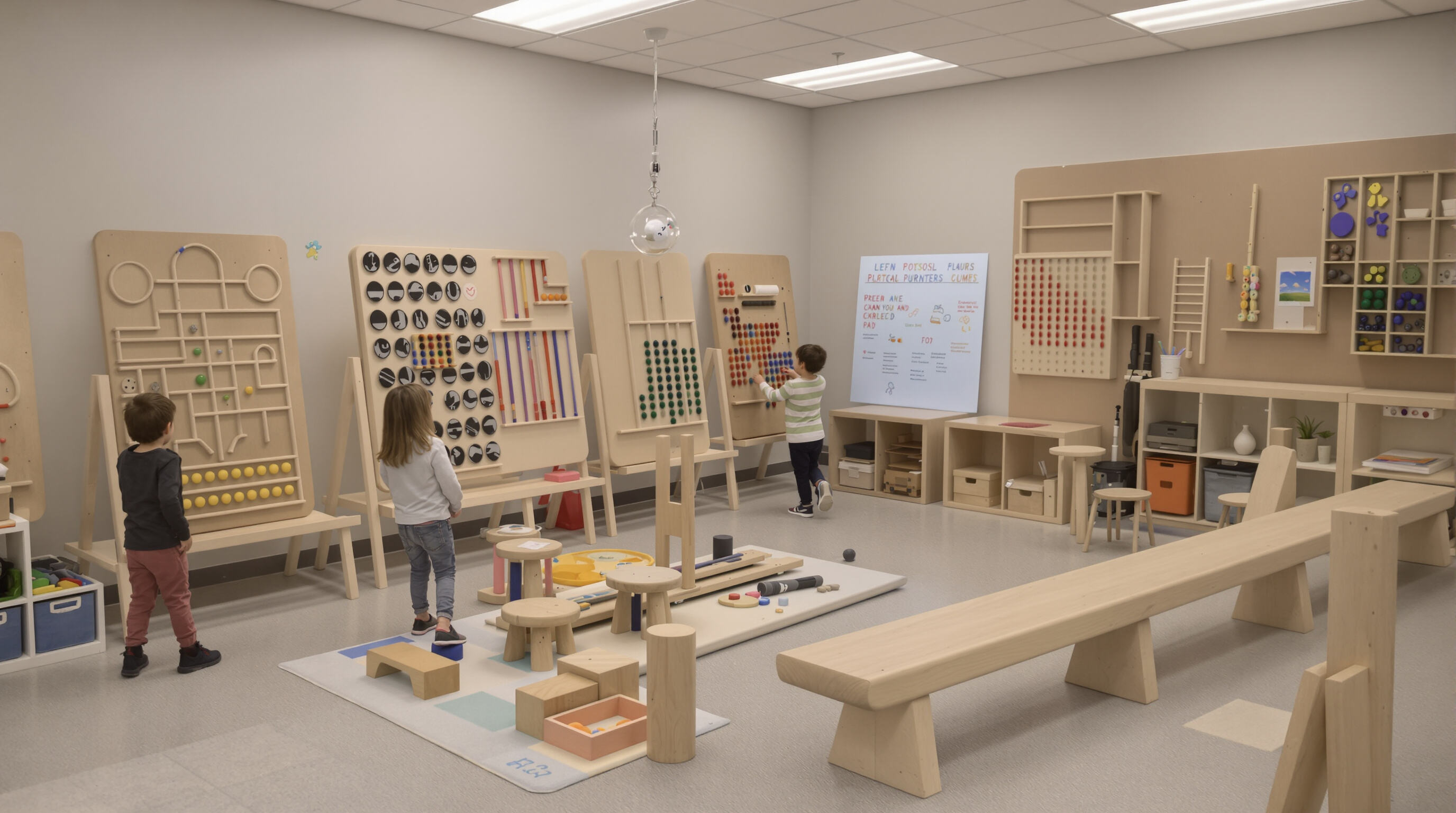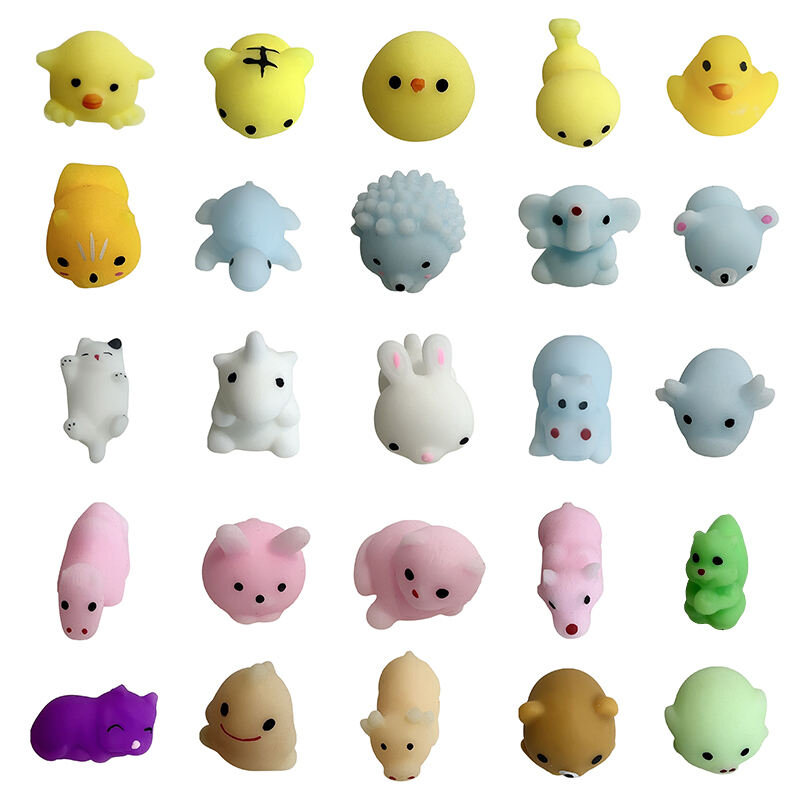The Science Behind Sensory Toys and Child Development

Sensory toys do a lot more than work those basic five senses we all know about. They actually get going on seven different systems inside the body that help babies and toddlers grow properly. Think about it this way: when kids play with these toys, they're not just seeing colors or hearing sounds. Their bodies are also working on balance stuff through movement (that's called the vestibular system) and figuring out where their limbs are in space when they push or pull things (proprioception). Take a look at what happens when little ones try to stand on a wobble board. They start learning how to understand their position in space without even realizing it. And when they mess around with therapeutic putty, squeezing and stretching it all over, they're actually building better awareness of their joints and muscles as they go along.
How Sensory Processing Supports Early Brain Connectivity
The brain builds connections through repeated sensory experiences, which helps us process information better over time. Take when little kids shake those toys that make noise for instance their brains start linking what they hear with the movements they make. This back and forth strengthens the connections between neurons responsible for understanding cause and effect relationships. Studies indicate that regular sensory play during early childhood actually boosts gray matter density in parts of the brain involved with memory formation and solving problems. One recent study published in Developmental Science Review found an increase of around 18 percent in these areas among children who engaged frequently in such activities before age three.
The Role of Sensory Integration in Cognitive and Motor Milestones
When kids can properly process different types of sensory input, they're better able to put together information from their whole body, which helps them hit developmental milestones faster. Playing with blocks that have different textures on them really works those hand-eye coordination muscles we call motor skills. Meanwhile, when little ones sort out shapes based on how they feel rather than just look, something interesting happens with their brain development too - kind of like training pattern recognition abilities. Research has shown some pretty compelling results here. Kids who get regular sensory playtime tend to master those tiny finger movements about two to three months sooner compared to other children who don't have these experiences as part of their routine.
Cognitive and Language Development Through Sensory Play
Boosting Problem-Solving, Memory, and Attention With Sensory Toys
Sensory toys help boost those important thinking skills because they make kids think about different textures, weigh things in their hands, and figure out what might happen next. Like when a child wonders why water beads actually bounce around instead of just squishing flat like playdough does. Playing with these kinds of toys helps build memory power as kids try stuff over and over again. Their attention also gets longer when they're busy putting together those colorful sensory tiles or trying to stack blocks that have interesting surfaces. A recent study from last year showed pretty impressive results too. Kids who played with puzzles that had vibrations built into them scored about 18 percent higher on tests measuring how well they could visualize spaces and objects compared to other kids who didn't use those special toys.
Encouraging Verbal Expression and Vocabulary Growth Through Interactive Play
When little ones get their hands on cloud dough or give those rainmaker toys a good shake, parents and teachers can jump in with some colorful descriptions. "Can you hear that rice rattling around? Sounds just like a summer thunderstorm!" This kind of talk helps babies link what they feel and hear to actual words. Research backs this up too. Kids who regularly play with all sorts of textures tend to pick up about twice as many descriptive words each month compared to other children. Asking things like "What's different about how this slime moves versus regular sand?" really gets them thinking and talking more clearly about their experiences.
Trend: Multisensory Storytelling Kits in Early Learning Environments
Many teachers are starting to mix in smells, sounds, and touch experiences when teaching reading skills these days. Kids could be shaping letters from fragrant modeling clay while listening to rhyming phonics tunes, followed by acting out parts of stories with special strips that change temperature under their fingers. According to research published last year in the Early Childhood Education Journal, this kind of hands-on learning approach actually helps children remember stories better than just looking at pictures in books alone. The study found around a 40 percent improvement in what kids retain after using these multi-sensory teaching tools instead of traditional methods.
Fine Motor Skills and Emotional Regulation Benefits of Sensory Toys
Strengthening Hand-Eye Coordination and Dexterity Through Tactile Play
Toys that stimulate the senses such as textured puzzles and playdough sets really help kids develop those small muscle movements in their hands. When little fingers have to work these toys just right, it builds up those fine motor skills. According to research published by Therapy Partners last year, kids who played with these special sensory toys every day saw their hand strength increase by around 27% over time when compared to other children playing with regular toys. The repetitive actions involved in things like scooping up materials from sensory bins or fastening buttons on busy boards actually helps build better hand eye coordination. This kind of practice creates important connections in the brain that will later make learning to write much easier for them.
Using Sensory Toys to Support Emotional Self-Regulation and Focus
Kids often get overwhelmed by too much stimulation, which is where weighted blankets and kinetic sand come in handy as they provide consistent sensory experiences that calm them down. A study published last year in the Occupational Therapy Journal found that around two thirds of preschool age kids showed faster emotional recovery after using specific sensory items when moving between activities. Textured fidget spinners let children regulate themselves without drawing attention, and those slow flowing liquid timers actually help with breathing patterns at the same time. These approaches have been shown to cut down on those sudden anxiety moments that happen so often in classrooms.
Sensory Tools for Children With Sensory Processing Challenges: Practical Insights
For the 1 in 6 children diagnosed with sensory processing differences (CDC 2022), adaptive tools bridge developmental gaps. Occupational therapists recommend:
- Multi-textured manipulatives: Graduated exposure kits help desensitize tactile defensiveness
- Compression wear: Snug vests improve body awareness in children with proprioceptive needs
- Visual timers: Predictable countdowns paired with sensory breaks ease task transitions
Early intervention programs using these tools report 43% fewer emotional outbursts during structured learning hours compared to traditional approaches.
Fostering Creativity and Imaginative Play with Sensory Toys
Promoting Open-Ended Exploration with Sensory Bins and Textured Materials
Toys that engage the senses such as kinetic sand tables or water bead stations really promote freeform experimentation which is so important for developing creativity. Research from Columbia University on sensory play showed something interesting too. Kids who played with these textured bins stayed engaged about 37 percent longer than when doing more structured tasks. The study looked at stuff like rice containers, foam blocks, and fabric samples. What this suggests is that these simple materials somehow spark that natural curiosity in children, leading them to learn through exploration rather than direct instruction.
Linking Sensory Experiences to Creative Thinking and Innovation
Tactile engagement with varied surfaces directly stimulates divergent thinking–the brain’s ability to generate novel solutions. As noted in a 2023 developmental psychology report, children who regularly used sensory toys scored 28% higher on standardized creativity assessments, with therapists observing enhanced metaphorical reasoning and "outside-the-box" problem-solving approaches.
Strategy: Rotating Sensory Toys to Sustain Engagement and Curiosity
To prevent habituation, cycle materials monthly using a three-category system:
- Natural textures (pinecones, dried leaves)
- Manufactured surfaces (rubber grip balls, silicone molds)
- Fluid mediums (colored water beads, scented playdough)
This approach maintains novelty while allowing deeper mastery of each material type, aligning with Montessori principles of self-directed discovery.
Integrating Sensory Toys in Home and Classroom Learning Environments

Teachers have noticed around a 23% boost in how engaged kids are during class when they start using those organized sensory integration methods according to Frontiers research from last year. Preschoolers especially benefit from having these special areas set up where they can touch different textures on boards or listen to various sounds. This helps them switch from one activity to another smoothly while also learning how to control their emotions better. Looking at data from early childhood education centers in 2023, it turns out that rooms which mix things like balance beams for physical play along with puzzle sets that focus attention saw about 31% fewer cases where kids got too overwhelmed or upset during transitions between tasks.
Best practices for sensory integration in preschool and classroom settings
Rotate sensory stations weekly to align with curriculum themes–pair counting exercises with bead mazes during math units. Teachers using multisensory lesson plans observe 40% faster concept retention compared to traditional methods.
Designing age-appropriate, sensory-friendly spaces at home
Create zones using:
- Exploration Areas: Water tables for toddlers, light projectors for preschoolers
-
Regulation Corners: Weighted lap pads and noise-canceling headphones
Limit visual clutter by storing toys in labeled bins with texture cues (ribbon handles for art supplies, smooth knobs for puzzles).
DIY vs. commercial sensory kits: Cost, effectiveness, and accessibility
| Factor | DIY Kits | Commercial Kits |
|---|---|---|
| Avg. Cost | $15–$30 | $45–$120 |
| Customization | High | Low |
| Durability | 6–12 months | 18–36 months |
Future of sensory toys: AI-adaptive tools for personalized development
Emerging systems analyze play patterns to adjust texture resistance or sound frequency–63% of pediatric therapists predict these tools will become standard in IEPs by 2027 (Frontiers 2024).
FAQ Section
What are the benefits of sensory toys for children?
Sensory toys assist children in developing their motor skills, cognitive abilities, and emotional regulation by engaging multiple sensory systems.
How do sensory toys improve language development in children?
Sensory toys encourage verbal expression and vocabulary growth by prompting interactive play and communication about different textures and sensations.
Are sensory toys helpful for children with sensory processing challenges?
Yes, sensory toys offer targeted support for children with sensory processing challenges, helping them with body awareness, task transitions, and emotional self-regulation.
Table of Contents
- The Science Behind Sensory Toys and Child Development
- Cognitive and Language Development Through Sensory Play
- Fine Motor Skills and Emotional Regulation Benefits of Sensory Toys
- Fostering Creativity and Imaginative Play with Sensory Toys
- Integrating Sensory Toys in Home and Classroom Learning Environments
- FAQ Section

